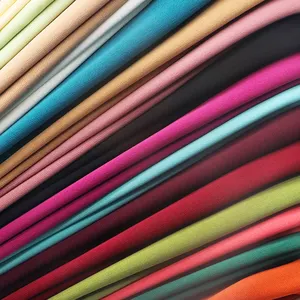Introduction to Fabric Creation
Fabric creation is an integral process in the textile industry, transforming raw materials into versatile fabrics used for a myriad of applications. The evolution of fabric creation techniques has led to improved efficiency and innovation, catering to diverse consumer needs in fashion, interiors, and industrial uses. This guide explores the various aspects of fabric creation, emphasizing its types, applications, features, and advantages.
Types of Fabric Creation
Fabric creation encompasses a wide array of techniques, each contributing unique characteristics to the final product. Understanding these types is essential for selecting the right fabric for your needs.
- Weaving: A traditional method where two sets of yarns are interlaced at right angles. This method results in strong and durable fabrics ideal for clothing and upholstery.
- Knit Fabric: Created by interlocking loops of yarn, knit fabrics are stretchy and comfortable, commonly used in activewear and casual garments.
- Non-woven Fabric: Made from fibers bonded together through chemical, mechanical, or thermal processes, non-woven fabrics are prevalent in medical and disposable products due to their efficiency and cost-effectiveness.
- Print Fabric: Involves applying dyes or inks to fabric to create patterns and designs. This technique adds aesthetic value and is popular in fashion and home decor.
Applications of Fabric Creation
The applications of fabric creation are vast and varied, serving countless industries and purposes. Here are some prominent areas where the fabric is utilized:
- Fashion Industry: Fabrics are the backbone of clothing production, from haute couture to fast fashion, enabling designers to express creativity through textures and patterns.
- Home Textiles: Upholstery, curtains, and bedding are crafted from diverse fabrics, enhancing aesthetic appeal and comfort in residential spaces.
- Industrial Use: Fabrics are essential in manufacturing sectors, such as automotive and aerospace, where specialized fabrics offer durability and resistance to elements.
- Medical Applications: Certain fabrics are designed for medical use, including gowns and masks that provide hygiene and protection.
Features and Advantages of Fabric Creation
Fabric creation encompasses various features that cater to specific functional and aesthetic needs. Below is a summary of key characteristics and the advantages they offer:
- Durability: Many fabrics are engineered for longevity, withstand wear, and resist fading, making them suitable for heavy-duty applications.
- Comfort: Fabrics like cotton and modal are celebrated for their breathability and soft texture, ensuring comfort in clothing and linens.
- Versatility: With countless textures, patterns, and finishes, fabrics can be manipulated to suit different uses, from formal wear to casual attire.
- Eco-Friendly Options: Innovations in fabric creation have led to sustainable materials such as organic cotton and recycled polyester, appealing to environmentally conscious consumers.
- Easy Maintenance: Many synthetic fabrics are designed to be stain-resistant and machine washable, adding convenience to everyday living.








































